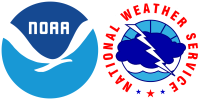
Freezing Rain Brings Icy Conditions
January 21 - 22, 2024

What is Freezing Rain?

The Forecast
Below is the long range forecast discussion, which was written five days ahead, that touches on the reason behind the uncertainty of precipitation type (rain vs. freezing rain). Model inconsistencies and surface temperatures within a degree or two of the freezing mark makes a big difference in resulting ice accretion.
Long term forecast discussion from a mid-shift forecaster 5 days before the event.
Forecasters utilize the Dynamic Ensemble-based Scenarios for IDSS (DESI) tool to graphically demonstrate the likelihood of freezing rain across the forecast area.
NWS Norman Twitter post on January 16
One of the most common questions we receive - how much will we get? Even 2 to 3 days ahead of the event, predicted ice accumulation can be a tricky beast. In addition to model accumulations, forecasters have tools to ascertain the likelihood of certain amounts. Below is an example of messaging that addresses the probability of receiving a glaze of ice. As can be seen in this graphic, southern and southeastern Oklahoma, which include Ada, Ardmore, and Durant, were identified as having a 60% to 70% chance of a glaze of ice accumulation.
NWS Norman Twitter post on January 19
Precipitation was forecast to spread northward on Sunday evening, during the overnight hours, and into Monday morning. The highest probabilities of measurable, liquid precipitation were for far southern and southeastern Oklahoma.
NWS Norman Twitter post on January 19
Another forecast discussion, written the day before precipitation onset, and the news is not good. One of the most highly impactful weather hazards that a meteorologist dreads is freezing drizzle. If this precipitation type is mentioned, this should be a red flag that road conditions could be very dangerous, and depending on accumulation amounts and wind speeds, power outages could be problematic, as well.
Area Forecast Discussion posted early Saturday morning.
On Saturday afternoon, the Norman WFO issued a Winter Storm Watch for parts of east-central and southeastern Oklahoma (see below), with the 0.5" of ice accumulations projected to be more widespread than the previous forecast cycle.
NWS Watch, Warning, Advisory Map, as of afternoon of January 20th.
By Saturday night, confidence was increasing that there would be multiple rounds of freezing rain and freezing drizzle with freezing fog also possible.
Area Forecast Discussion posted early Sunday morning.
The mid-shift forecaster on Saturday night then added a Winter Weather Advisory for areas surrounding the Watch (see below).
NWS Watch, Warning, Advisory Map, as of morning of January 21st.
The Winter Storm Watch was upgraded to a Winter Storm Warning on Sunday afternoon.
NWS Watch, Warning, Advisory Map, as of afternoon of January 21st.
Model QPF
One challenging aspect (among many) with the freezing rain forecast was the highly variable amounts of liquid precipitation (i.e., quantitative precipitation forecast or QPF) among all numerical weather prediction models. In general, QPF is one of the most difficult parameter to predict with high accuracy - especially for events beyond short- and medium-range forecast periods. However, as the event draws closer (within 24 to 48 hours) and within the time range of high resolution models (i.e., convective allowing models or CAMS), there should be an improvement in model agreement with respect to QPF (but not always).
While the CAMS gave forecasters an idea of the orientation and placement of heaviest precipitation, there were still large differences in modeled QPF (for any given location) for each model initialization - right up to the onset of the event. Below are screenshots that illustrate the contrast in modeled QPF from the HRRR and NAM Nest models, which initialized the day prior. Oklahoma City, for example, was prog'd to receive 0.07 inches of liquid precipitation from the HRRR and 0.20 inches from the NAM Nest, which is a large difference once you factor in the other contributing factors that yield the amount of ice accumulation.
Comparison of modeled quantitative precipitation forecast (QPF) between two high-resolution weather models (HRRR and NAM Nest).
The Event Unfolds
January 21st 6 PM upper air sounding from Norman, OK
7 PM Mesoscale Discussion from the SPC
The Winter Weather Advisory was upgraded to a Winter Storm Warning for McClain, Cleveland, and Pottawatomie Counties
6AM upper air sounding in Norman, OK